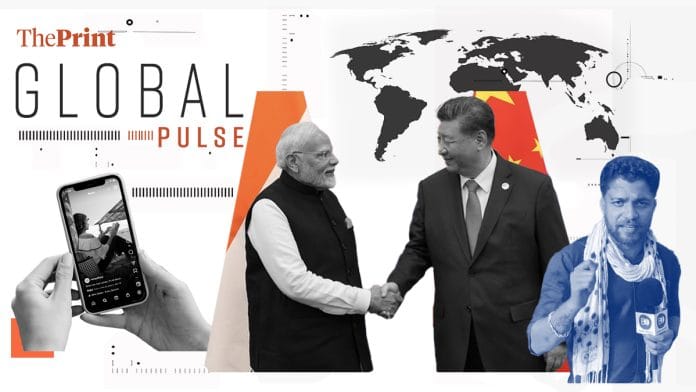New Delhi: The Indian concept of “timepass” isn’t just timepass; it’s now officially a way of life in India, at least according to Bloomberg columnist Andy Mukherjee.
Mukherjee writes in the column ‘‘Timepass’ Is India’s Way of Lying Flat’ that doing timepass is emerging as a social and cultural phenomenon. It is very similar to the “lying flat” movement in China, which encouraged the youth to exit the economic race and “settle for mediocre workplace success and modest consumer fulfilment”.
This isn’t a new idea. Sociologists like Craig Jeffrey have written about this in his book, ‘Timepass: Youth, Class, and the Politics of Waiting in India’. But the ennui Jeffrey captured in 2010 has gotten worse, Mukherjee writes.
The unemployment rate amongst college graduates in India stands at 29 percent, nine times higher than the 3 percent unemployment amongst those who are uneducated. For female graduates, this number is as high as 34 percent.
Indians spend an average of four hours a day on their smartphones, up from 3.3 hours a day in 2023. The phenomenon of joblessness aids this, writes Mukherjee. But it’s not necessarily a reflection of new modes of income or revenue. The “so-called creator economy is basically the commercialisation of timepass — with active encouragement of the state”, he writes.
“Since it neither had China’s one-child policy nor its sustained pace of double-digit economic growth, the cohort that came of age with an abundance of material possessions is still small in India. For a majority of youth, lying flat is not a durable solution… yet,” explains Mukherjee.
Young Indians and desperate job seekers are resorting to the “donkey route” to leave India as soon as they can. And the rate of cyber crimes has exploded, with educated Indians using technology to make money through scams.
“Give it another 10 years. As families shrink, authorities might have to reckon with nihilistic youngsters who both want to retreat from society and have enough parental wealth to do so. In affluence, attitudes, and absence of effort, India’s timepass generation may not be that different from its lying-flat Chinese counterpart,” writes Mukherjee.
In another column in Bloomberg, titled ‘India and China Should Admit Their Economies Are Intertwined’, Mihir Sharma argues that the constant China comparison is no accident—the economies of both India and China are far more intertwined than either will admit.
Despite whatever geopolitical progress both countries seem to be making, both are also concerned about reviving slowing growth.
“Some in India’s government have now begun to realize that breaking free of China — by growing domestic competitiveness and finding export markets of our own — won’t happen unless we enter supply chains that our northern neighbor currently dominates,” writes Sharma. “In other words, an India that manages to compete with China will only do so with China’s help.”
Chinese businesses will have to invest in India’s manufacturing ecosystem for it to be an effective substitute for the factories that same business operate within China, and Chinese goods will need to serve as inputs.
This is why, Sharma suggests, both countries have begun to tentatively repair a damaged relationship. The slowdown in growth has given both countries the impetus to return to some state of normalcy.
“Yet the fundamental problem remains: Both also want different things from this thaw. The Indians want Chinese investment, inputs, and for them to stop pushing on the border.”
The Chinese, on the other hand, “want another market, and hope they can get the Indians to be less enthusiastic participants in a future Trump administration’s attempts to isolate China politically and economically. New Delhi knows about this mismatch, and so does Beijing. But both countries’ economies are in such a hole that they are willing to overlook it — for now”, Sharma writes.
Meanwhile, the Guardian reports on how media rights groups in India have called for an investigation into the death of Mukesh Chandrakar, a freelance journalist from Chhattisgarh. The suspected reason for his death is a recent report into an alleged road construction scam in Bijapur, says the report titled ‘Indian press groups call for investigation after journalist’s body found in septic tank.’
“India remains a highly dangerous place for journalists, according to global media watchdog Reporters Without Borders, with 28 journalists killed over the past decade due to their reporting,” the article says.
Also Read: Modi’s diamond to Jill Biden outshone all in 2023 & why India’s dragging its feet on climate action






